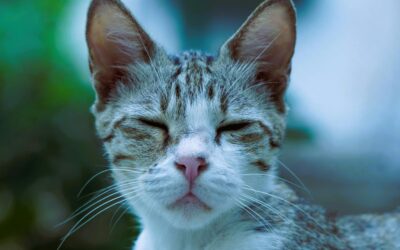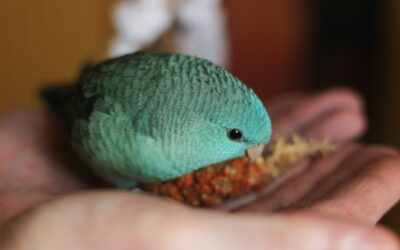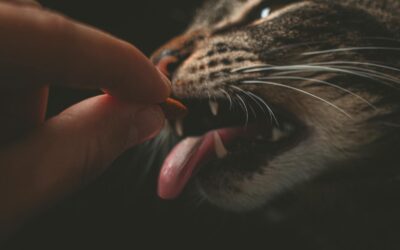Axolotls, often referred to as “Mexican walking fish,” have rapidly gained popularity as unique and fascinating pets. Their feathery gills, soft bodies, and remarkable ability to regenerate lost body parts make them stand out from more traditional pets. But are axolotls good pets for you? This blog will explore their care requirements, fascinating biology, and the best practices for keeping axolotls in a healthy environment.
If you’re considering welcoming one of these aquatic animals into your home, read on to learn everything you need to know!

What are Axolotls?
Axolotls, also known as the Mexican walking fish, are fascinating aquatic creatures that belong to the salamander family. They are unique in that they retain their larval features throughout their lives, never undergoing full metamorphosis into a land-dwelling adult form. With their external gills, feathery fringed gill stalks, and adorable smile-like expressions, axolotls have captured the hearts of many animal enthusiasts.
Native to the ancient lake systems of Mexico, these enigmatic creatures are known for their regenerative abilities and captivating appearance. They come in a variety of colors, including pink, white, gold, and black, making them a striking addition to any aquatic setup. While they may require specific care, providing a suitable environment and proper nutrition can offer a rewarding experience for those captivated by these aquatic wonders.

Benefits of Having Axolotls as Pets
Owning an axolotl as a pet can be a uniquely rewarding experience. Here are some of the benefits of welcoming these fascinating creatures into your life:
-
Low Maintenance: Axolotls are relatively low-maintenance pets, making them suitable for both beginner and experienced pet owners. They have specific care requirements, but once you have set up their habitat correctly, they are generally easy to care for.
-
Fascinating Behavior: Watching axolotls in their aquatic environment can be endlessly captivating. They exhibit interesting behaviors such as swimming, burrowing, and feeding, providing constant entertainment and intrigue.
-
Unique Aesthetic Appeal: With their distinctive appearance and charming smile-like expressions, axolotls are visually striking pets. Their vibrant colors and feathery gills make them a beautiful addition to any home or aquarist’s collection.
-
Regeneration Abilities: Axolotls are well-known for their remarkable regenerative abilities. They can regenerate lost limbs, organs, and even parts of their spinal cord. Witnessing this incredible regrowth process can be awe-inspiring.
-
Long Lifespan: When properly cared for, axolotls can live for a significant amount of time, up to 10-15 years or even longer. This allows for a long-term companionship and a bond that can grow over time.
-
Educational Opportunity: Keeping axolotls as pets provides an excellent opportunity for education, particularly for younger generations. They offer a chance to learn about aquatic ecosystems, biology, and responsible pet ownership.
Remember, it’s crucial to thoroughly research and understand the specific care requirements of axolotls before deciding to keep them as pets. With the right knowledge and dedication, these unique amphibians can bring joy, fascination, and a sense of wonder into your life.

Setting Up the Perfect Habitat for Your Axolotl
Axolotls may be low maintenance compared to other exotic pets, but they do require a well-maintained aquatic environment for a healthy life. Here’s how to set up the ideal habitat:
Tank Setup and Size
- Tank Size: Plan for at least a 20-gallon tank for one axolotl, with more room needed if you plan to house multiple axolotls.
- Secure Lid: Axolotls may jump, so ensure the tank has a secure lid.
- Water Depth: A depth of 10-12 inches is sufficient, though axolotls love exploring larger spaces.
- Hiding Spots: Add live plants, caves, and other hiding places to keep your axolotl feeling secure and comfortable.
Water Quality and Temperature
Axolotls are sensitive creatures with permeable skin, making water quality crucial to their health.
- Water Temperature: Keep the water between 60-64°F (15-18°C). Use a water cooler or an aquarium chiller if needed, as heat stress can be fatal.
- Water Quality: Invest in a reliable aquarium filter to maintain clean water.
- Treat tap water with an aquarium water conditioner to remove harmful chemicals like chlorine.
- Test water regularly for pH, ammonia, and nitrates to ensure a healthy environment.
- Aeration: Axolotls benefit from an air pump to maintain oxygen levels, as their feathery gills require good water circulation.
Substrate
- Opt for fine sand or no substrate at all. Avoid gravel or large pebbles, as young axolotls or juvenile axolotls can accidentally ingest them, leading to health issues.

Feeding Your Axolotl the Right Diet
A balanced and varied diet is crucial for your axolotl’s well-being.
What to Feed
- Staples: High-quality commercial fish pellets specially formulated for aquatic animals.
- Brine shrimp, small fish, or worms like bloodworms.
- Treats: Occasional treats like small strips of raw lean meat or earthworms.
Feeding Schedule
- Young axolotls need daily feeding, while adult axolotls can be fed 2-3 times a week.
- Remove any uneaten food promptly to avoid fouling the water.
Special Notes
Ensure your axolotl’s food is the right size. Small fish or other live prey should not be large enough to harm or stress your pet.
Other Important Care Tips
Handling Axolotls
Axolotls have soft bodies and permeable skin, so avoid handling them unless absolutely necessary. If you must move your axolotl, use a fine mesh net to minimize stress and injury.
Tank Companions
While some owners keep small fish with their axolotls, it’s usually best to house them alone. Axolotls can view smaller animals as food, and some fish may nip at their delicate gills.
Preventing Health Issues
Common issues include:
- Heat Stress: Keep your axolotl in cool water to prevent overheating.
- Unsanitary Tank Conditions: Poor water quality can lead to fungal infections and bacterial infections.
- Vitamin Deficiencies: A varied diet helps prevent health issues related to poor nutrition.
Things to Know Before Getting an Axolotl as a Pet
Before deciding to bring an axolotl into your home, there are several key factors to consider and important information to be aware of:
- Tank Setup and Maintenance: Axolotls require specific aquarium setups with appropriate water conditions, filtration systems, and hiding spots. Regular tank maintenance, including water quality monitoring and cleaning, is essential for their well-being to reduce the spread of viral or bacterial infections.
- Chilled Water Requirements: Axolotls are cold-water amphibians and thrive in cooler temperatures. It is important to provide them with a suitable environment that maintains a consistent temperature range of around 60-68°F (15-20°C).
- Feeding Routine: Axolotls are carnivorous and primarily eat live or frozen foods such as bloodworms, brine shrimp, and small pieces of fish. It is crucial to ensure a proper diet and feeding routine to meet their nutritional needs.
- Space and Tank Size: Axolotls require ample space to swim and explore. A minimum tank size of 20 gallons is recommended for a single axolotl, with additional space needed for each additional axolotl.
- Compatibility and Solitary Nature: Axolotls are generally solitary animals and prefer to live alone. Keeping multiple axolotls together may require a larger tank and careful monitoring to prevent aggression or stress.
- Handling and Fragility: Axolotls have delicate skin and are sensitive to rough handling. It is important to handle them with care, avoiding direct contact with bare hands and using wet hands or a soft net when necessary.
- Lifespan and Commitment: Axolotls have a relatively long lifespan, living up to 10-15 years or even longer with proper care. Owning an axolotl requires a long-term commitment to their well-being and providing a suitable environment for their entire lifespan.
It is crucial to thoroughly research and understand the specific care requirements of axolotls before bringing them into your home. Consulting with experienced axolotl keepers or aquatic specialists can provide valuable guidance and support in ensuring the best care for these unique amphibians.
Are Axolotls Right for You?
Despite their exotic status, axolotls are relatively good pets for those willing to put in a little effort. They are fascinating to observe, easy to care for with the right setup, and provide a unique pet-keeping experience. That said, they are not ideal for every pet owner. If you’re looking for an animal you can handle and play with regularly, an axolotl may not meet those expectations.
Axolotls thrive in a low-stress environment with minimal handling, making them better suited for patient, observant pet owners who are captivated by their biology and behavior.
Finding and Purchasing a Pet Axolotl
If you’ve decided an axolotl is the right pet for you, ensure you purchase from a reputable breeder or trusted pet store specializing in exotic animals. Avoid taking axolotls from the wild, as they are endangered and protected.
Prepare for your axolotl’s arrival by purchasing all necessary supplies in advance, including a tank, water conditioner, food, and decorations for their habitat.

Kates K9 Pet Care provides small pet care and more. Visit our website today!
Final Thoughts on Axolotls as Pets | Are Axolotls Good Pets?
With their fascinating biology, unique appearance, and low maintenance requirements, axolotls undoubtedly make great pets for the right person. Proper care ensures your pet axolotl thrives in a comfortable environment, giving you years to appreciate their charm and quirks.
If you’re ready to welcome an axolotl into your home, begin by setting up their aquatic habitat and learning about their specific needs. With patience and care, you’ll discover why axolotls are some of the most rewarding aquatic animals to keep.






